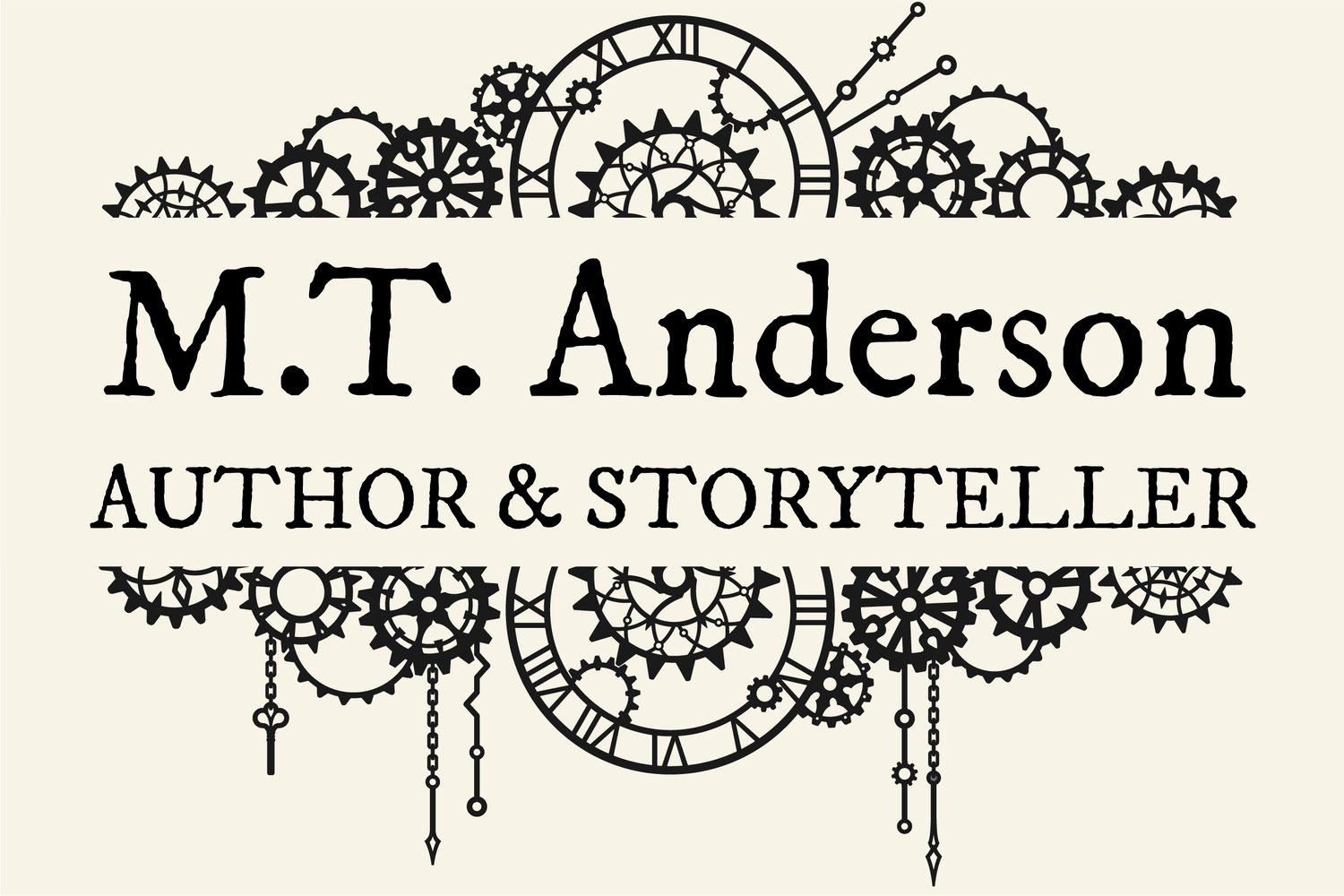Whales on Stilts
I loved writing this book. One summer day, an editor and I were sitting on the lawn at Vermont College, talking about those books we’d on vacation when we were boys – books with cracking good plots, simple, vivid characters, no real narrative logic, and, most important, a tremendous expression of freedom and joy. I decided I wanted to write a book like one of those – a vacation book.
A few weeks later, I went up to Canada to stay in my grandparents’ cabin on a lake up there. There’s no phone there, no internet, and only a trickle of electricity. There was nothing to disturb me.
My task up there was to read about the American Revolution for another project I was considering – a project that eventually became my Octavian Nothing books. (An interesting note: Nowadays, only a few years later, you’d never think of driving up to an unplugged, signal-less spot in Canada to dip into research, since the internet is so central to how we establish a basic understanding of topics. Back then – 2002 A.D. – we still drove around with boxes full of books in our cars if we wanted to read in remote spots … and so I sat on the rocks above the lake, reading about men in tricorner hats.)
It was during my Canadian vacation that summer that I wrote the first draft of Whales on Stilts. It was a blast. An expression of pure joy. During the day, I’d go for a kayak into some lonely bay of the lake, thinking of jokes and plot twists, and then I’d paddle back to make my grotesque dinner (I’m an awful cook) and I would eat my ghastly, scratchy repast looking out at the red-lit isles, typing dorky gags. Late at night – at one or two in the morning – I’d stop writing, and I’d go out and sit on the rocks and look at the stars.
It was a great time. I have the best job in the world. I feel incredibly lucky.
I can only hope that the readers of this book have as much fun reading it as I did writing it – that maybe in the middle of a busy, difficult day, it can convey some of that sense of vacation – school’s out – breaking the rules.
An added note for writers: I also wrote this book after having heard Marion Dane Bauer talk about story structure. In that lecture, she described a traditional story structure in which there is a basic conflict which the characters try to resolve in three ways, each one with higher stakes – with the third attempt resolving the conflict for better or worse. (This is a simplification and paraphrase of what she said, but you get the idea.)
I decided that this would be a perfect sub-structure for this novel. The conflict in the book – it’s subtle, an eternal struggle – is that an army of stilt-walking whales are invading the land. I have three main characters. So I decided I’d have three episodes, three attempts to foil the stilt-walking whales, each attempt putting the main characters in more danger – and each attempt focusing on a different character. The first focuses on Jasper, the second on Katie, and the third, the culmination of the whole book, focuses on Lily, who has felt like a third wheel up until that point. My notion was that the underlying tripartite structure of the book itself would play into her development as a character and a sense of her triumph.
I have never written another book on the three-part plan, but I should. It is an old and well-known format, it really does feel natural – and I think that it accounts for some of the commercial success of this book. That structure, regardless of the weird ornaments and trappings I heap all over it, feels familiar and comfortable. I’d like to try it again.
PS. My favorite foreign edition of this book is the Taiwanese version, which is called, in Chinese, WHALE-MONSTER INFANTRY DIVISION!
